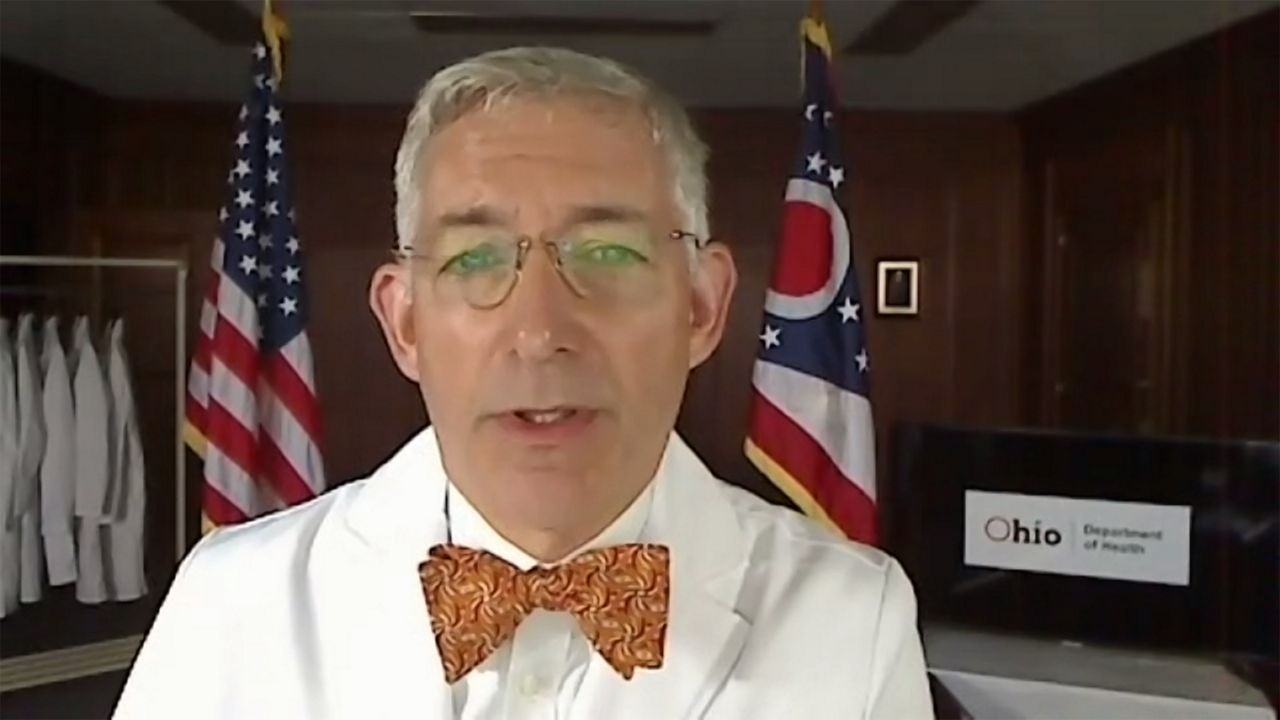COLUMBUS, Ohio — Health officials anticipate that COVID-19 cases will decline in the coming weeks, but Ohio Health Director Dr. Bruce Vanderhoff said Thursday that a rapid drop off is unlikely.
What You Need To Know
- Ohio doctors said COVID-19 cases have peaked, but virus levels remain high
- Dr. Vanderhoff said there will likely still be substantial spread on Thanksgiving
- Children's hospitals in Ohio are still stretched then for available bed space, he says
“It appears the delta surge has, in fact, plateaued. Nevertheless, we continue to see very high numbers of COVID-19 cases and hospitalizations,” Vanderhoff said. “We are higher than we were a year ago, but I remain cautiously optimistic that we'll continue to see our cases decline as we move forward.”
The Ohio Department of Health addressed the state of the pandemic during a virtual news conference that featured Dr. Kirk Tucker, Adena Health System’s chief clinical officer, and Dr. Adam Mezoff, Dayton Children’s Hospital’s chief medical officer.
Vanderhoff acknowledged that the continued impacts of COVID-19 can feel relentless, but he called for Ohioans to continue to take precautions against the virus for a while longer.
“I know that this can feel at times like an almost never ending journey, but I’d ask you to please hang in there. This is not the time for us to let up,” he said.
Average daily cases have declined by 32% since a recent high in mid-September, but 3,226 patients remain hospitalized, only a 13.8% drop from the recent high at the end of last month.
The state reported 531 weekly COVID-19 deaths in the latest update Tuesday — just shy of the prior week’s report of 545 deaths, which was a recent high.
After an individual tests positive, Vanderhoff explained that it may be days or weeks later when those, who ultimately need hospitalization, become sick enough to be admitted. He added that hospitalized patients can pass away after spending several weeks in the hospital, and then it can take weeks, or even months for verified mortality data to be reported by the state.
“This all means that we may not know the full impact of this surge numerically for some time, but what we do know is that our hospitals are continuing to tell us that they are feeling the very real effects of the surge,” Vanderhoff said.
While he said he has learned it’s nearly impossible to predict the course of the virus, Vanderhoff said it’s likely that around Thanksgiving Ohio will still have “substantial” spread of COVID-19.
He said COVID-19 is, by nature, a virus that spreads more easily in winter, and he noted that other regions of the country and the world that were hit earlier than Ohio are still seeing significant transmission.
“When we look at how the delta wave has crested and then declined in other parts of the world and even here in other parts of our country that were more on the front end of the delta wave, it doesn't just drop off like a cliff. There's typically a fairly long plateau, and then a decline over a fairly substantial period after that,” Vanderhoff said.
Tucker said Adena Health is thankful that cases have plateaued because the peak level last month, when 40% of its inpatients had COVID-19, was not sustainable.
He said the strain from the surge was so intense that nurse-to-patient ratios were stretched to one in eight, when they should be one in four.
“Imagine yourself as a patient for any reason — a heart attack, a stroke or even COVID, and now your nurse essentially has half the amount of time that he or she otherwise would have to address your many times critical needs,” he said.
The situation for children’s hospitals remains severe, with hospital beds frequently becoming full, Mezoff said.
“We, on a daily basis, have to make a decision on whether or not we can accept patients from outside of our hospital or region,” he said. “The other children's hospitals in the state of Ohio are doing the same thing, which means that our beds are literally full on a regular basis.”
Vanderhoff said there are several reasons to be hopeful about the future, mentioning the Food and Drug Administration scheduling November discussions about possible authorization of vaccines for children aged 5 to 11, and expressing optimism about the potential impact of oral therapeutic treatments.
“We're getting closer to being able to live life the way we want to, but for now, we need to continue to be cautious and take the necessary steps to prevent the spread of COVID-19,” he said.



